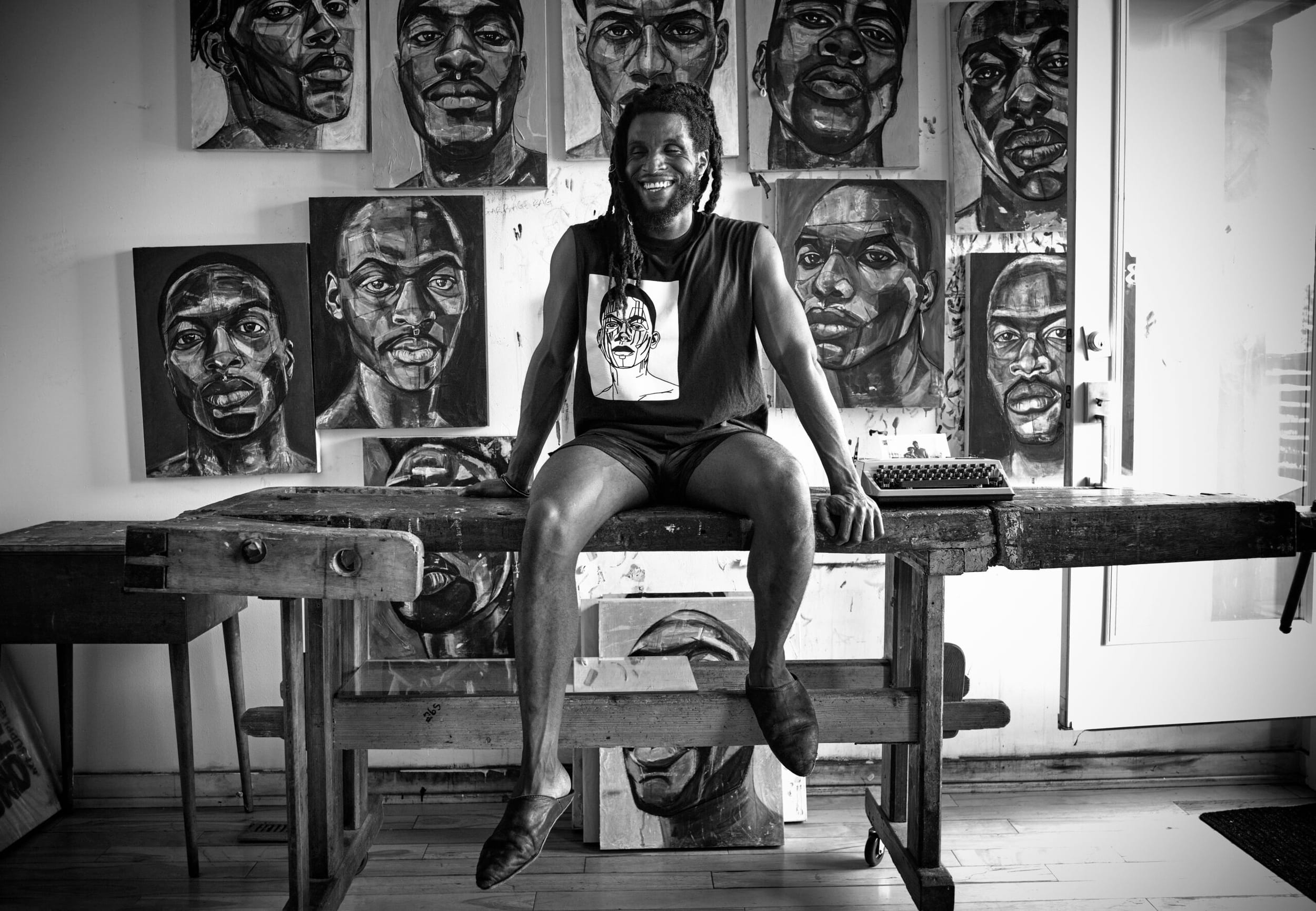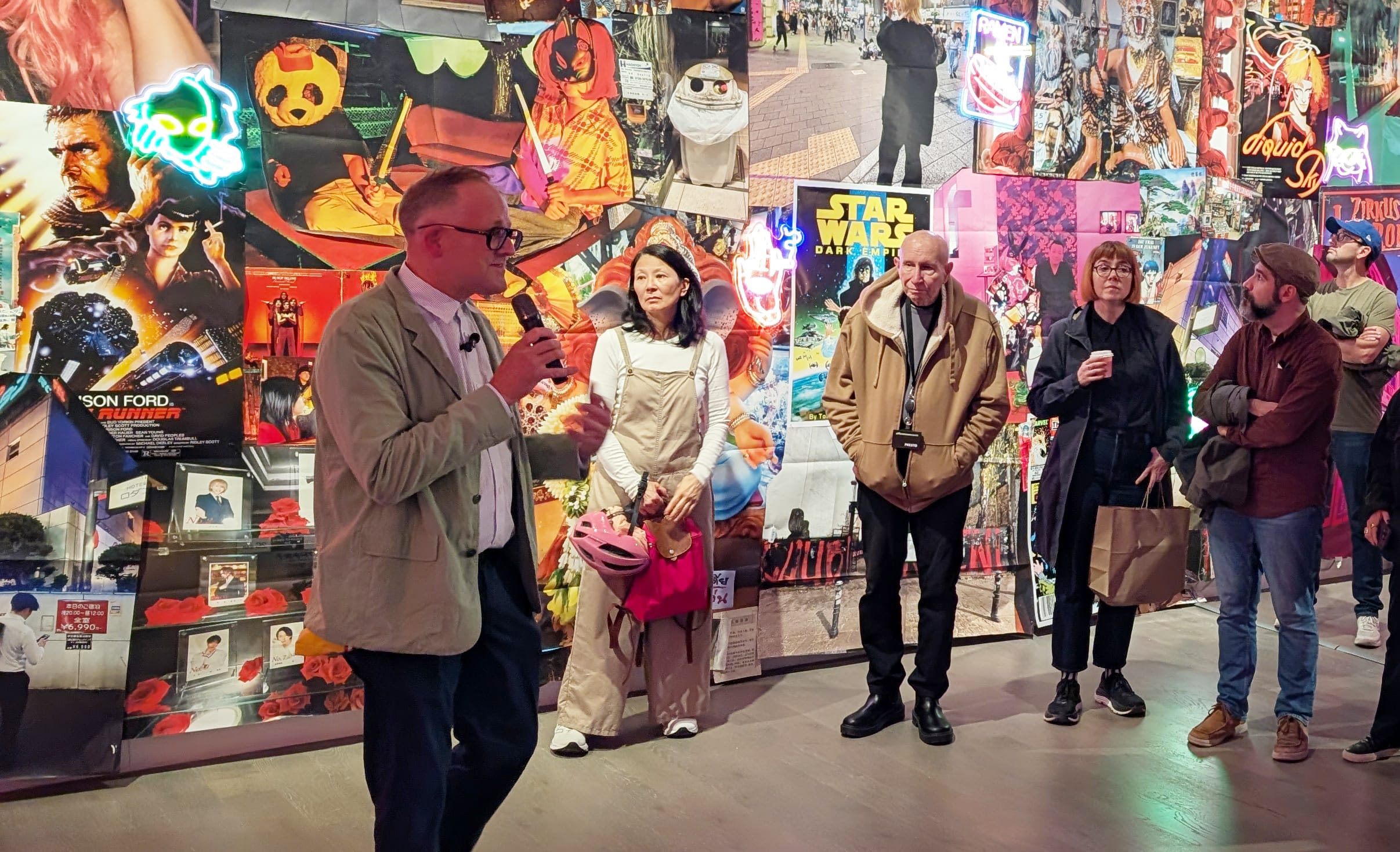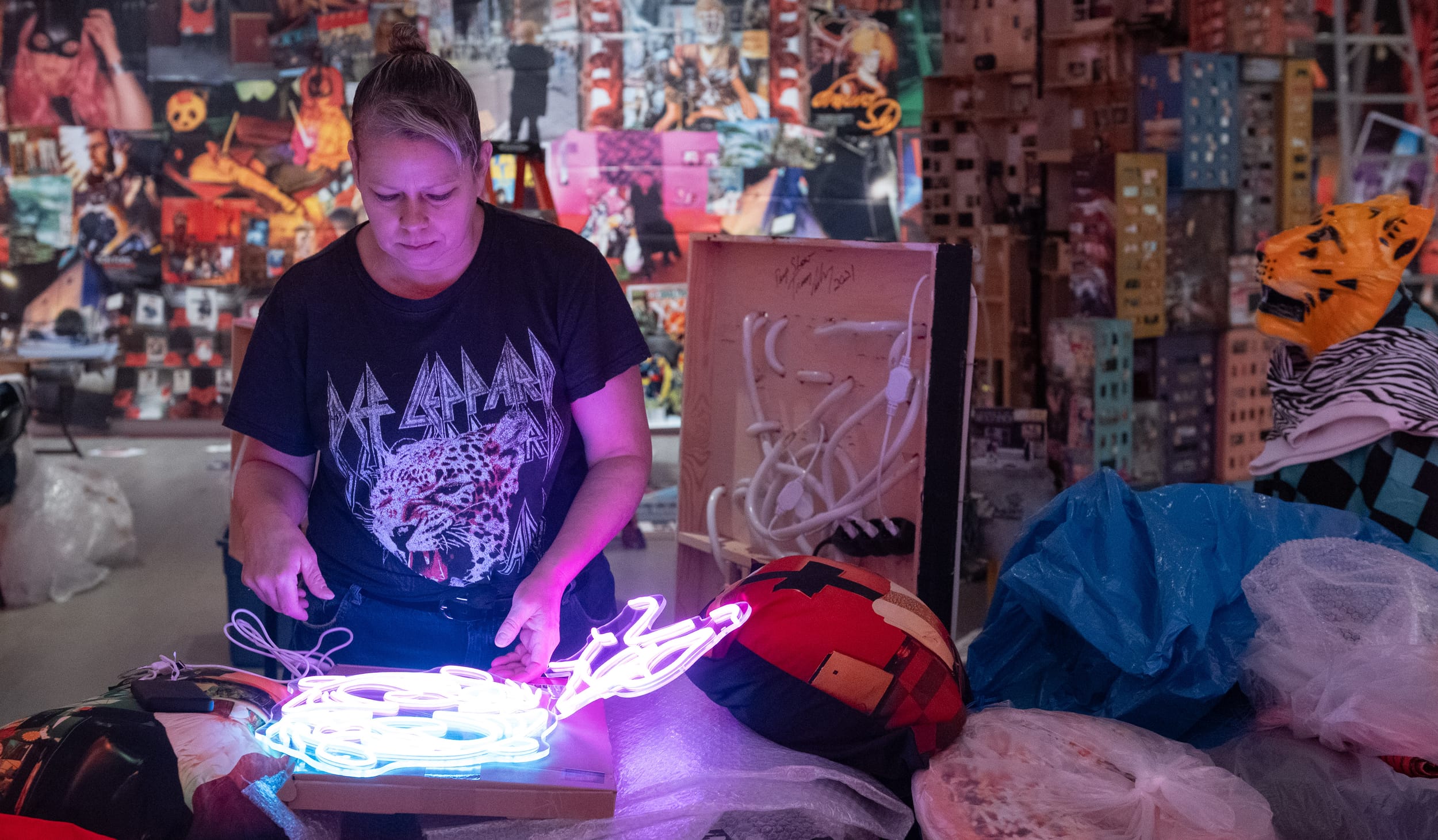A School of Their Own
Young Changemakers, a Toronto program supported by Koffler Arts, is helping students learn how to connect with and transform their environment.
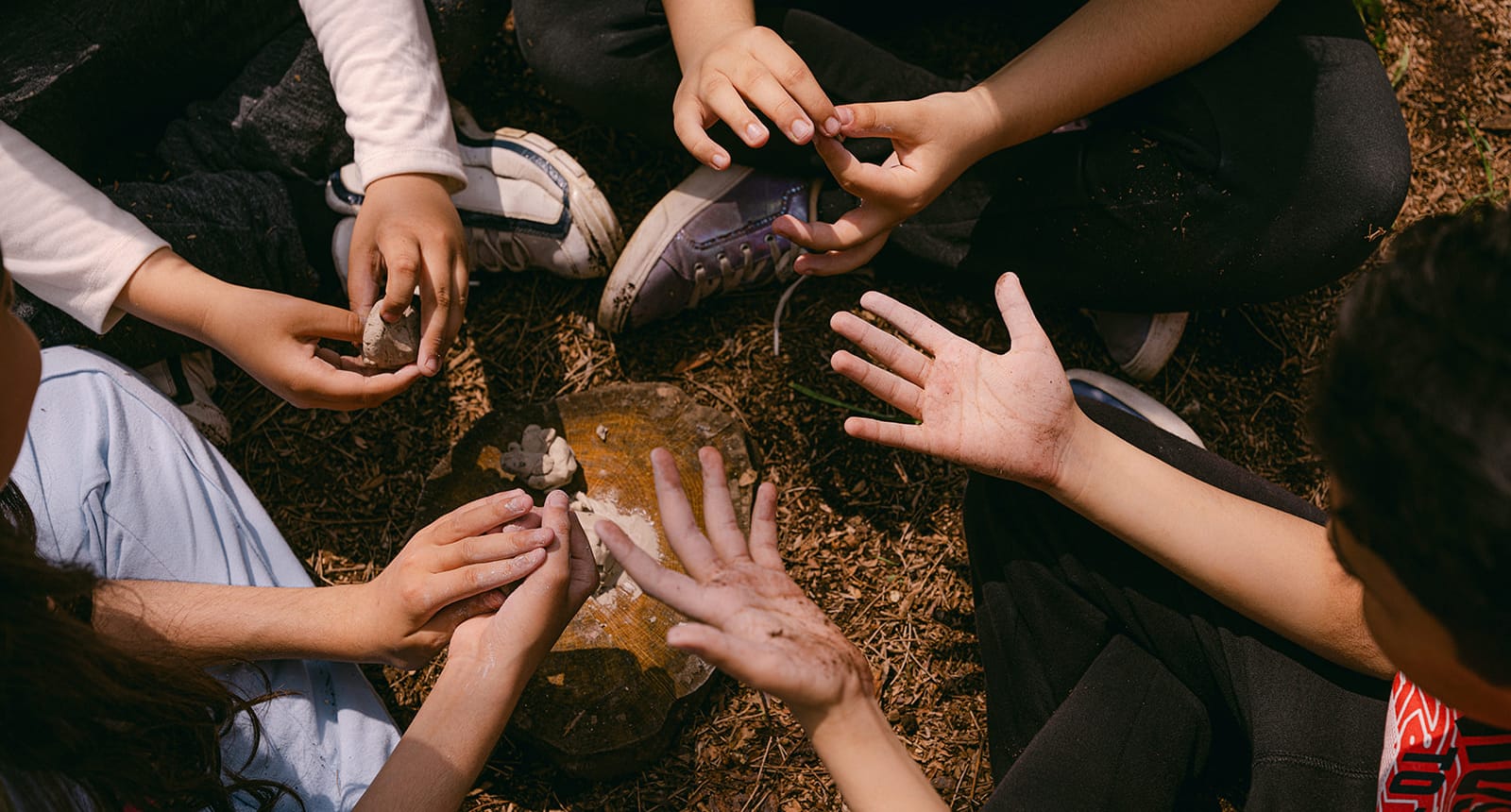
When you attend a school with almost 2,000 students, it can be hard to feel like it’s a place where you have the opportunity to really shape your environment. But that’s exactly what the arts organization Recreate Place aims to do at a number of Toronto schools, such as Thorncliffe Park Public School, through its Young Changemakers program in partnership with Koffler Arts.
Now in its second year, with financial support from the Ontario Trillium Foundation, Young Changemakers brings professional artists directly into classrooms to provide hands-on programming and education to students aged eight to twelve—not only helping them to learn the basics of art making, but to collaborate in the creation of larger-scale art projects and installations to make them feel like the school is a place they can call their own.
Many of the projects activate otherwise underutilized spaces—an underused courtyard, for example—or solve a practical program, such as anti-collision bird decals on windows. And aside from encouraging students to feel a sense of agency over their environment, the art projects also help ground students in some of the realities of life. Sometimes, a project you’ve worked on doesn’t work out quite the way you imagined. Sometimes, you’re just having a bad day, but making a piece of art can make you feel proud of what you’ve accomplished.
As one of the students in the Young Changemakers program at Thorncliffe Park told Arcade, “Sometimes art doesn’t have to be perfect. When the wind blows, it might disappear, and that’s okay.”

Annie Vandenberg, Recreate Place
Often children are left out or invited in very small, tokenistic ways. We’re trying to create intentional and authentic experiences so children can make transformations. Art is an accessible, exciting, and meaningful way for kids to transform their space. It’s integral that we’re partnering with artists, collaborators, and folks like Koffler Arts to bring children into the mix and give them this opportunity.
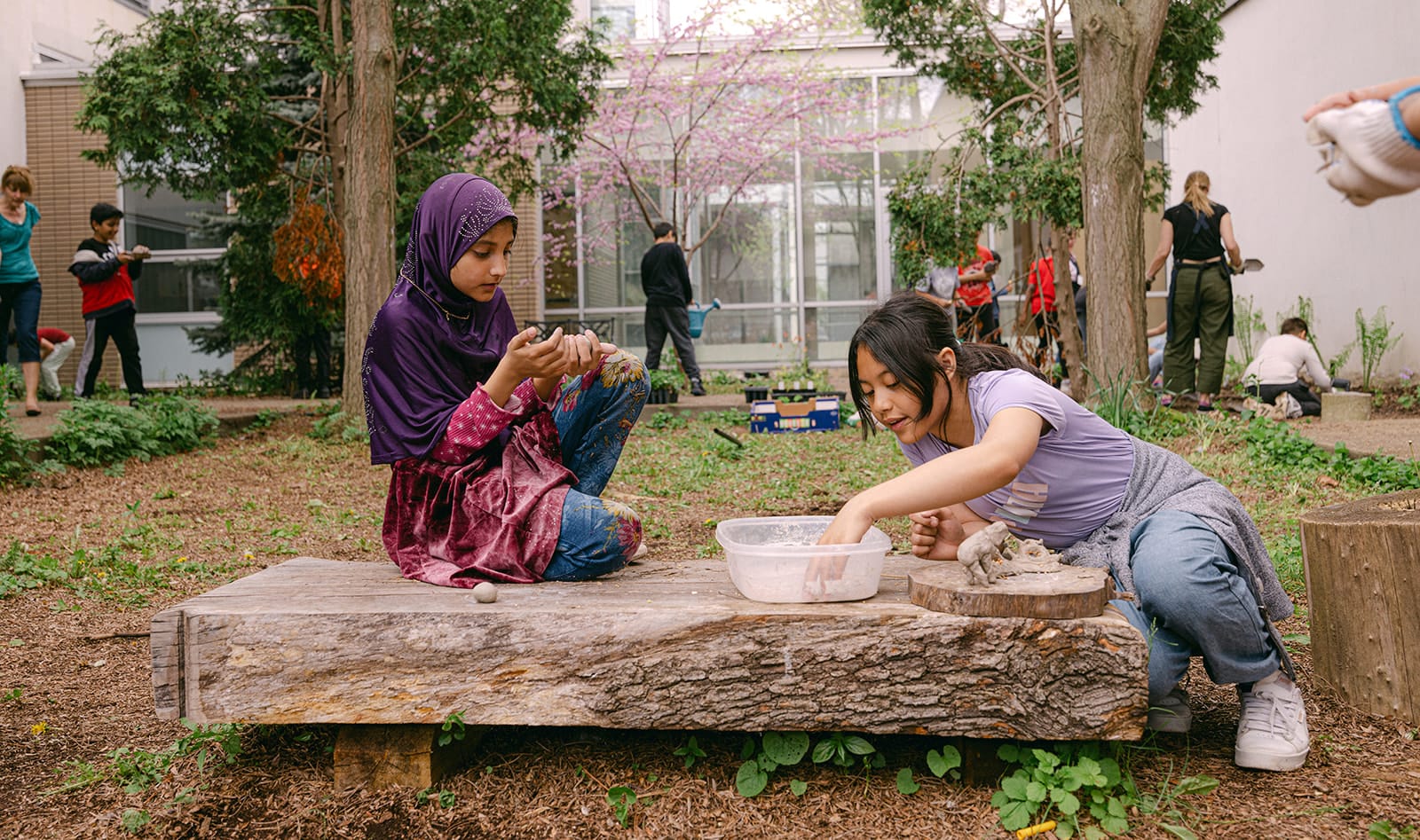
Paula Gallo, Recreate Place
Art helps the students feel a sense of success very quickly. These art activities are designed to be collaborative, to encourage conversation between students, and to encourage cooperation. It’s something tactile, it’s immediate.
Maya, grade four student
First, we got these gelatin pads, and then the art lady, Leah, put ink on the gelatin pads. We put leaves that we collected from outside and put them on the pads [to make an imprint], and then massaged it onto the gelatin. Then it turned into this really pretty leaf.

Katie Strang, artist
There are definitely unique challenges to working with kids. You have to frame things to allow them the freedom to do something interesting and beautiful that they have ownership of, but then help it come together in the end. It does become like a cohesive piece that they can see as public art.
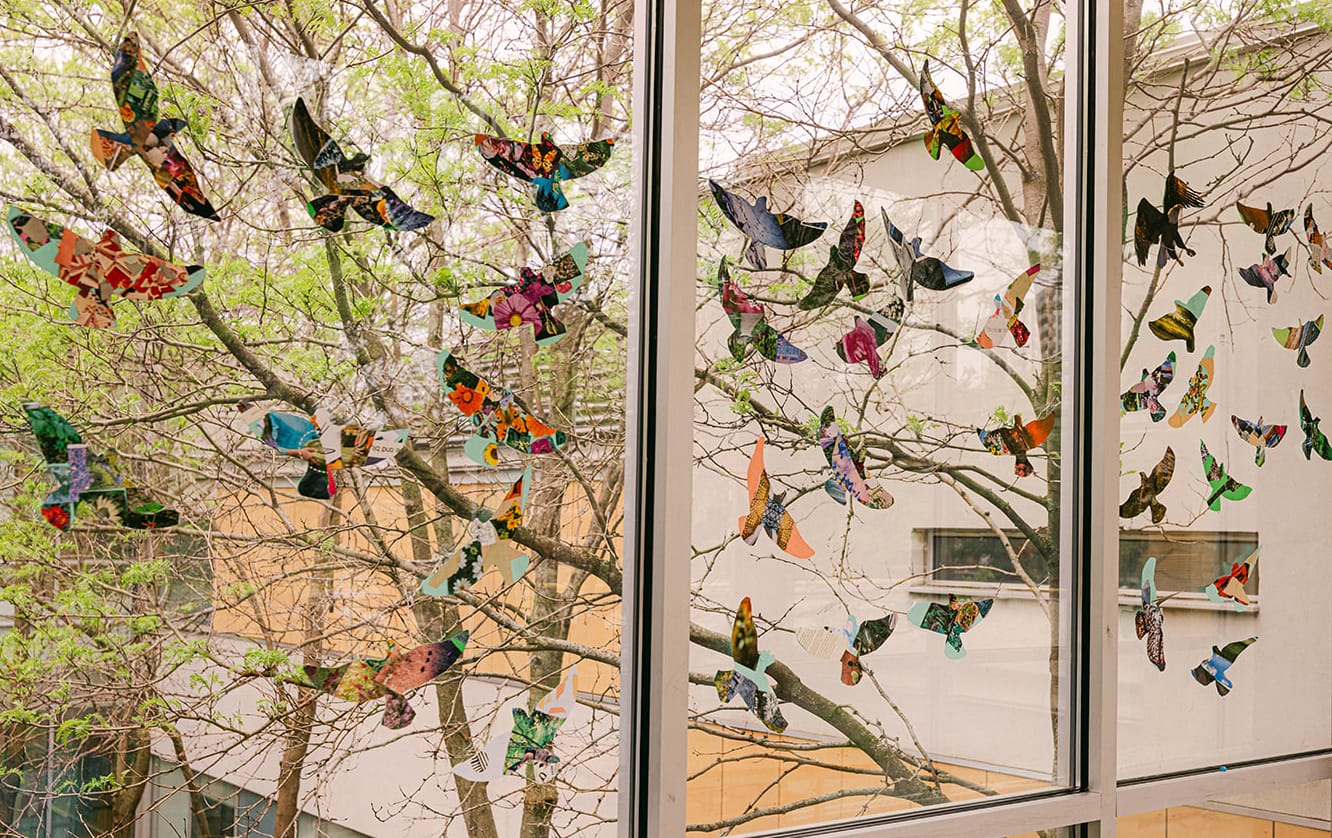
Maya, grade four student
I’ve never really done important art before, except for some drawings. I’ve done art at home, but I’ve never thought of doing something like this. If my parents see my art piece, I’m going to be happy. If my brother or sister saw it, I’m sure they would be happy. I would be happy. I don’t know about other people, but I’m sure any of my family would be happy. I had a lot of fun. And I got a little bit messy, too.


Roda Medhat, artist
At the beginning of the program, most of the kids said that they weren’t good at art because their understanding of art was limited to drawing and painting. Through the program, we were able to introduce students to a variety of art forms, and as a result, they became more confident in their creativity and art-making abilities. Simple things like fine motor skills, abstract thinking, and comprehension of instructions visibly improved by the end of the program. The projects aren’t just creative endeavours; they involve skills and methods of thinking that are essential for their development.
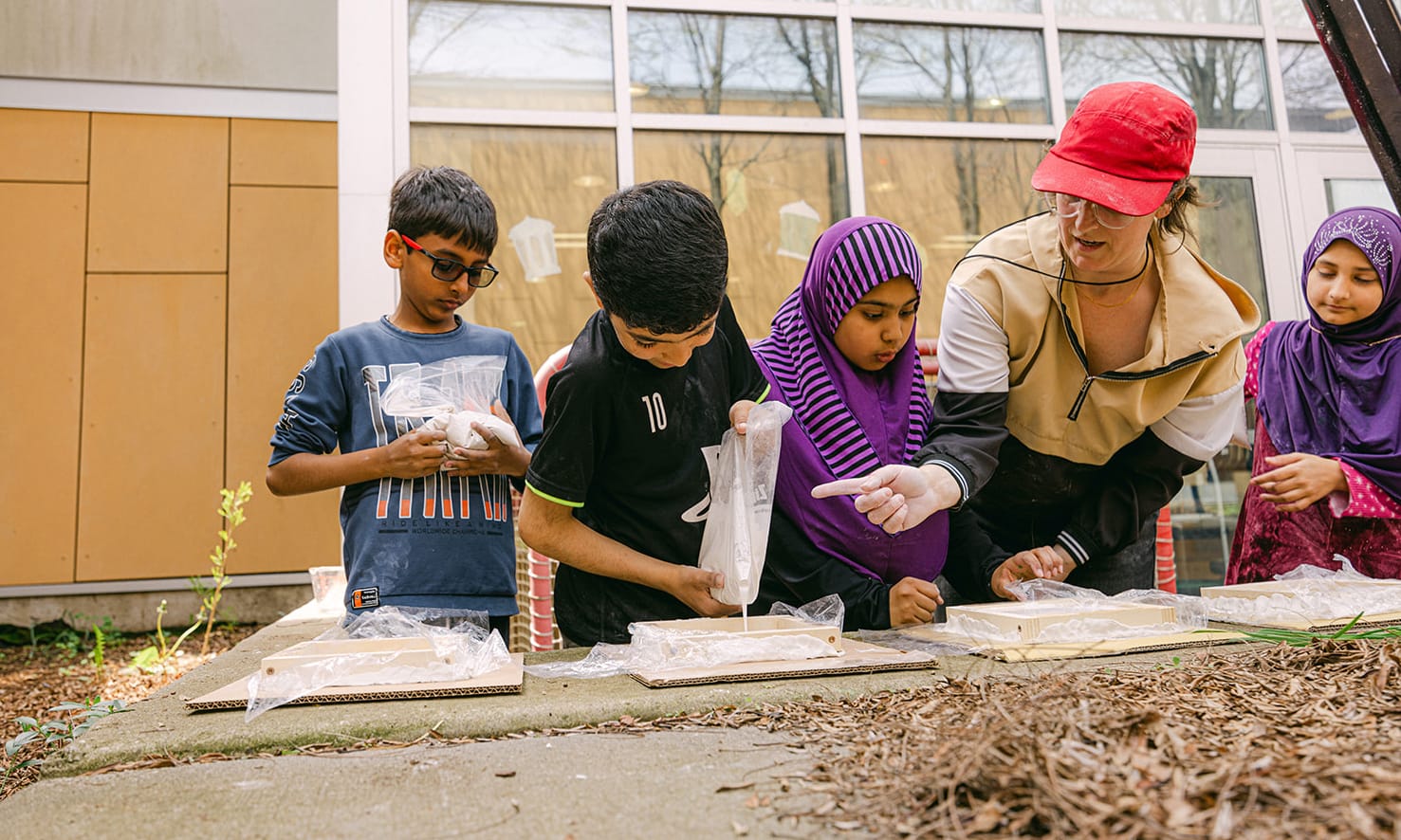
Stephanie Beretta, teacher
As a teacher, I always enjoy the opportunity to stand back and observe my students from an “outside” perspective. It is a pleasure to watch them get excited about having real artists in our midst, and they respond to every activity with anticipation and enthusiasm. They seem happy in their creating, which has boosted their confidence as creators of art.
When they see the artists in the halls, even when it isn’t our Art Jam day, my students feel part of something bigger than just the usual day-to-day. They have a greater appreciation for the art displayed around the school and community now that they are part of the program and not just an observer. I, too, am more fully engaged in the art that is being created and displayed.

Roda Medhat, artist
The best thing about working with the kids is that their understanding of the projects and works we did in the classroom came through in their execution. You could really see and understand how they interpret the instructions and the materials. Seeing how the kids understand and execute the projects has helped me better understand my approach to art making. Understanding the needs of the community informed a permanent sculpture project I am doing in the community with the City of Toronto.
Maryam, grade four student
I made tiles using clay. I learned how you can make clay into so many interesting things. I loved putting different materials into the clay. I've found how art can make you feel calm and relaxed. I was a little upset that day, too. I loved putting different materials into the clay. We put in flowers and leaves, and acorns I brought from home. I made a leaf print and then acorn prints in the leaf.
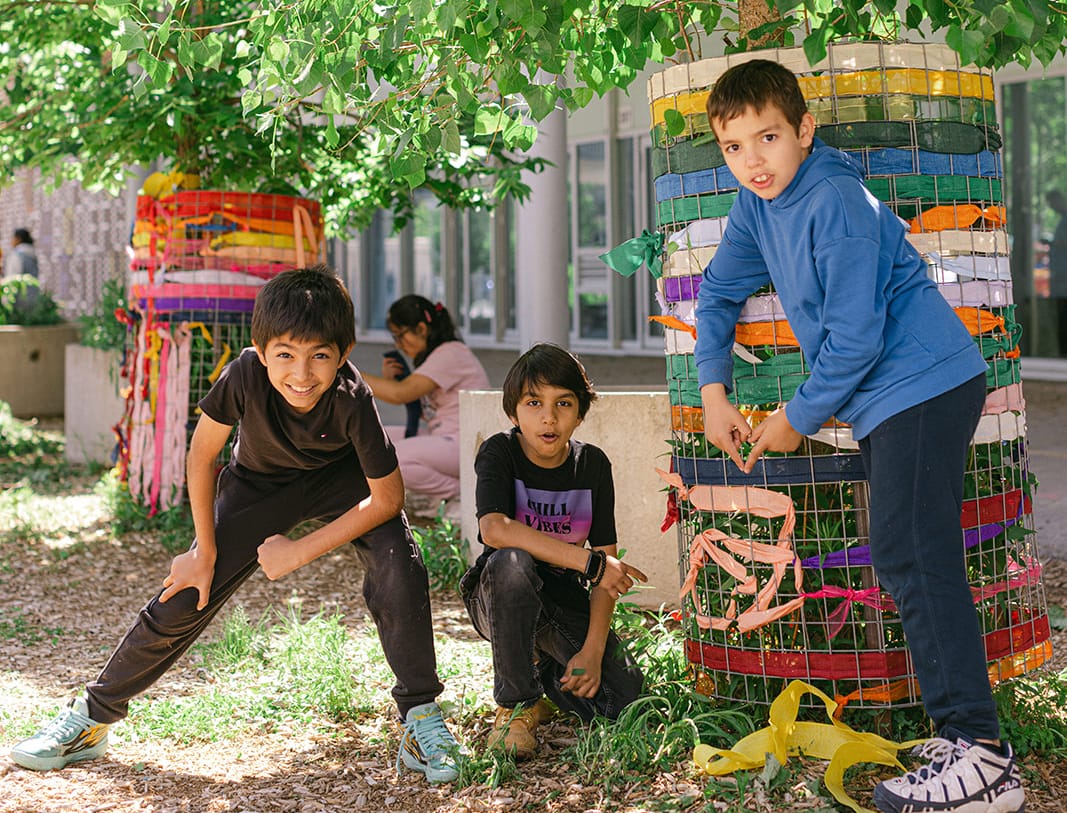
Stephanie Beretta, teacher
The other day, we walked to the retirement community in our neighbourhood where we are building a relationship with the residents. On our walk, we passed a colourfully painted electrical box and noticed it, out loud! We have become better observers and appreciators of public art. Perhaps next year, as I continue to strengthen my/our ties with the retirement community we visit, we might even consider using art as a bridge.
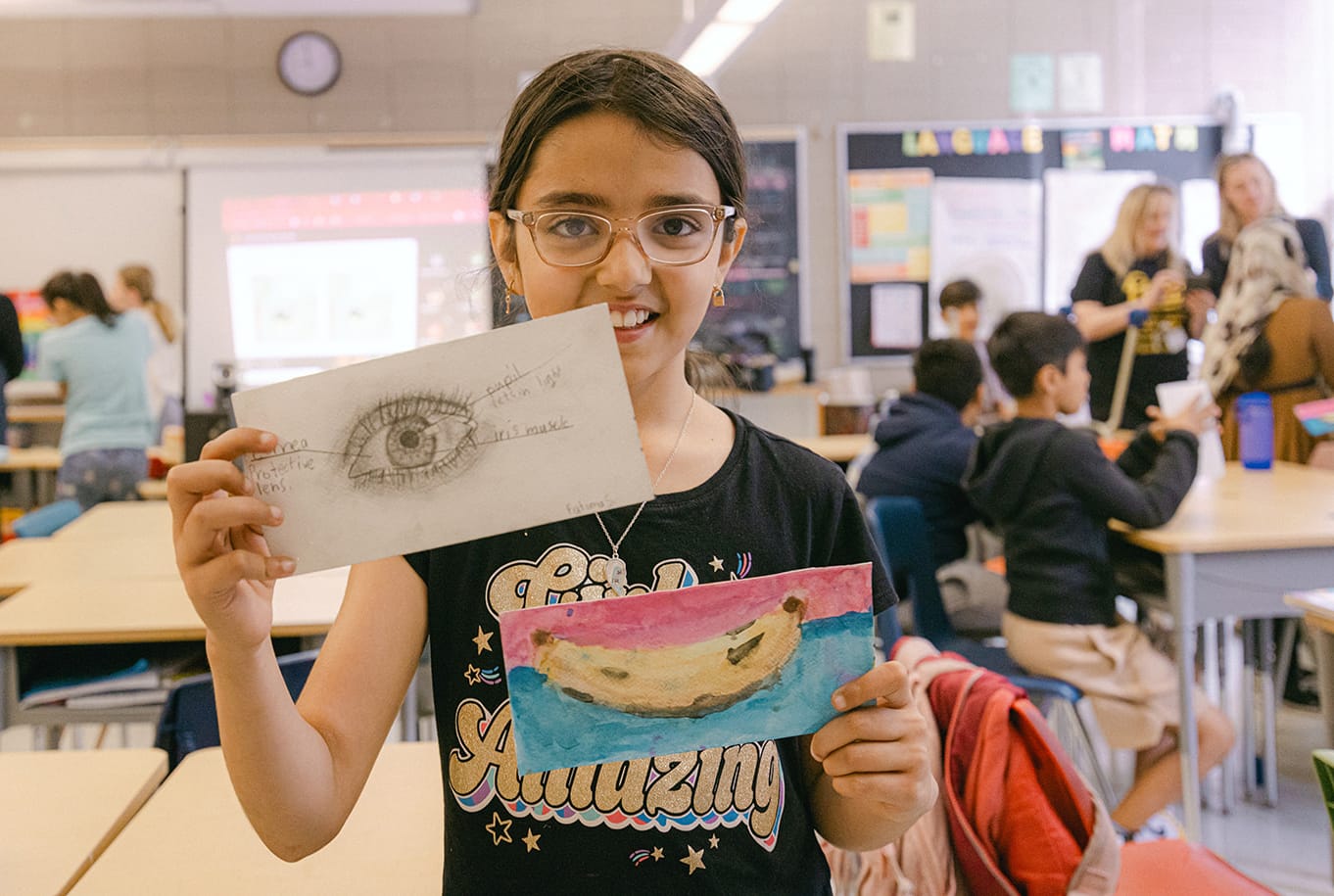
Maryam, grade four student
You can learn so much new stuff by making, like when the artists taught us how to make tiles and blend in watercolours. I also learned that art can help you calm down and make you feel happy. I was even shocked by what I made. Now I can do this all the time whenever I'm bored, which is really nice. After I learned how to use water colours, I painted a lot at home. My sister and I made a diamond. First, we put tape between some shapes. Next, we painted pink, purple, and blue. Then we got a toothbrush and sprinkled some white paint, and it turned out really nice.



